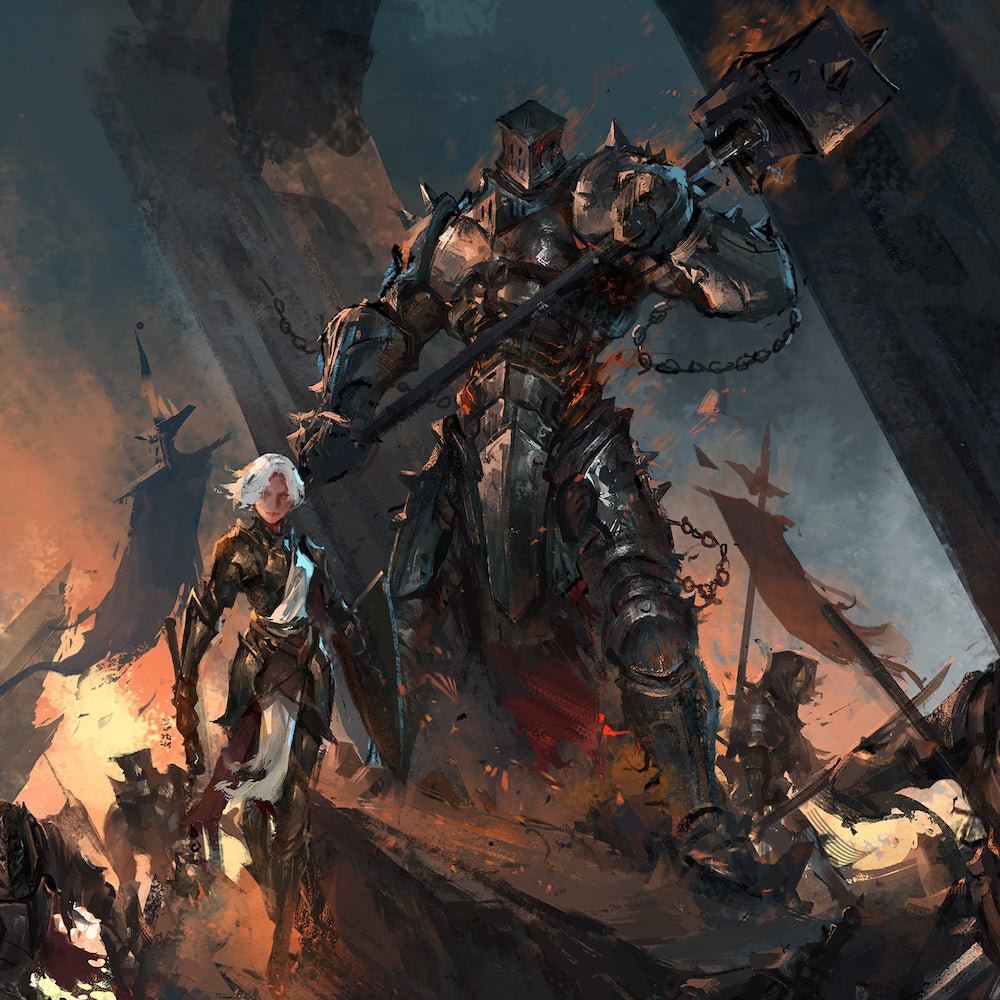Castle of Thorns - Concept and Sculpting

When creating the Fantasy line of miniatures, we started with the idea that we needed to create terrain to serve the function of photography backdrop, display / diorama, and for playing skirmish games with the miniatures. The first faction we started developing is the Forces of Night.
When starting a terrain project such as this, the first step is to reference art and photography to gain inspiration. When coming up with the idea for the place where this evil faction hangs out, we started with classic concept of "castle ruins" and mixed in the idea of oversized thorn bushes wrapping themselves around the battlements (further destroying the structure over time). Below is the simple sketch for the layout of the game board:

The second step in the process of creating this game board is assembling materials and starting the sculpting process. This normally involves 2" rigid foam for a base and other thicknesses of foam for the other layers. It also involves using glue to assemble layers of foam together. Our preference is for construction adhesive as it immediately creates a tackiness but takes some time to dry (so adjustments can be made.



You'll note we use paper cutouts instead of actual miniatures... Using paper cutouts of miniatures, to scale, help ensure you are building terrain of the right size that the miniatures can move through effectively. Using paper cutouts of miniatures also means that you don’t break actual miniatures when you flip the foam board accidentally!
Once the sculpting was finished, and we were able to dry fit everything, we used the construction adhesive to attach all of the foam together. The next step was to add the thorny branches that give this project a cool aesthetic. We do this by using a specific type of clay called Monster Clay. This clay is hard at room temperature and gets soft when heated up. As shown in the picture below, there are three steps for making the thorny branches out of clay:
- First, heat up the clay and separate it in different size balls. Then roll those balls into long strands of different lengths and diameters.
- Second, twist the different strands into each other. Bend and twist the combined twisted strand to fit onto the terrain,
- Finally, take smaller pieces of clay and shape them into thorns. When you attach them to the strand, blend the clay at the base of the thorn.

The next step is to apply gravel and sand using a high quality wood glue. Since this is a base layer of texture, the wood glue creates a stronger bond that regular white glue. Some areas you will want to put a lot of sand and no gravel (where models will be moving through. Other areas you want to limit the amount of sand / gravel because it isn't a rough area. Below is a picture of the the board after we applied some thin foam to represent tile with some gravel / sand spread around at the edges:

As a final step in the sculpting process, we put down a base coat of black using the airbrush (for the uncoated foam areas and the "tough to get to" areas) and craft paint with large brushes. It's important not to use household spray paint as it will melt the foam. Also, house paint smells terrible for a few days so it takes longer to get back to work after using it. Base coating is an important part of the sculpting process because it allows you to see where the board needs extra foam or texture. At this point you can fill in any gaps before proceeding with the final paint work. Below is an image of the board with a base coat:

In the next hobby blog article we'll detail how this board is painted and weathered!


